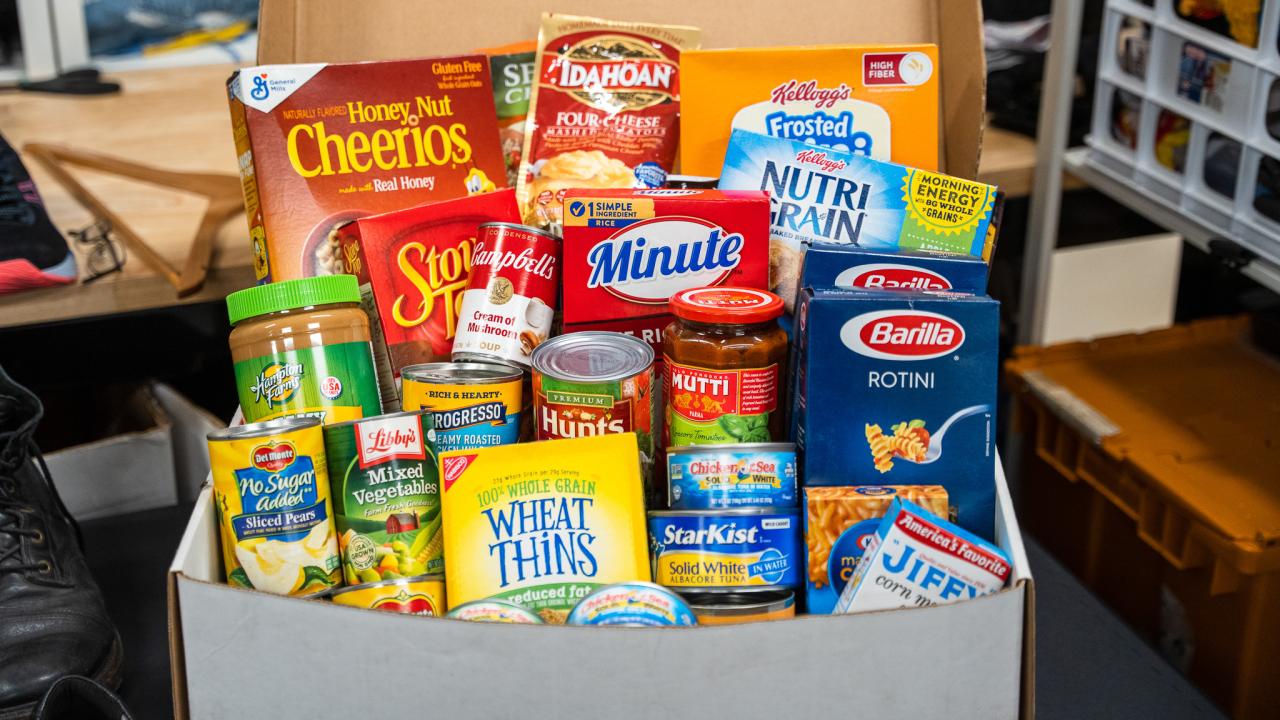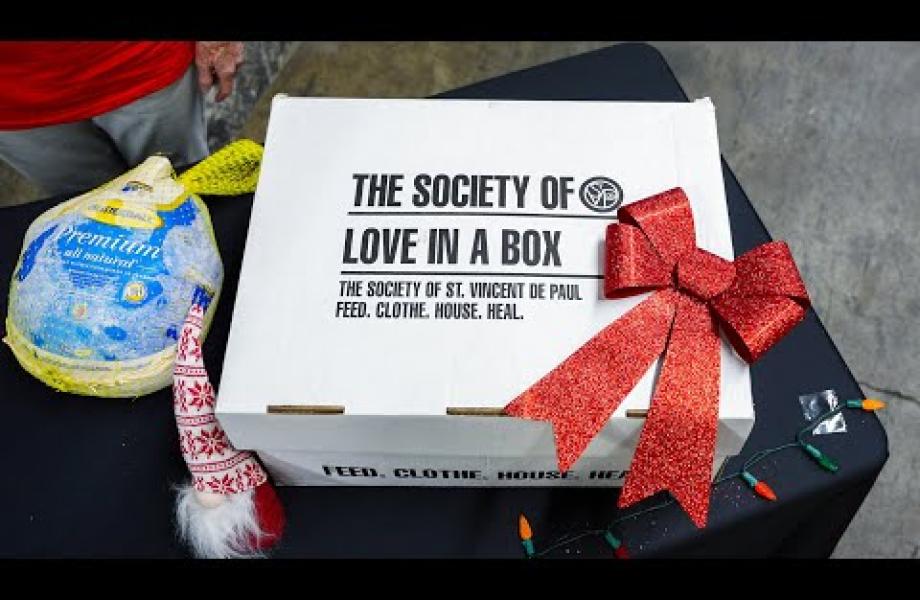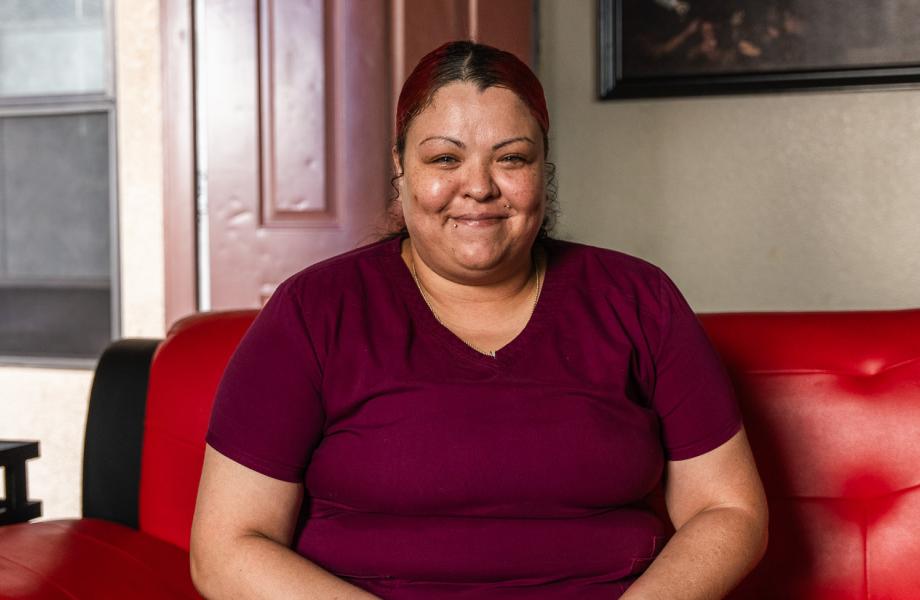What goes into a food box?
Every year, St. Vincent de Paul delivers almost 200,000 food boxes to households in need, bringing nutrition and relief to thousands of families and individuals across the Valley and central and northern Arizona. Most food boxes are delivered by Vincentians, a special type of SVdP volunteer who devotes their time to serving their community through SVdP neighborhood pantries, often housed within Catholic churches.
In the video above, Julie Douglas, one of those Vincentian volunteers, shows us some of the essential food items that make up a food box delivered to a family in need.
Vincentian volunteers usually construct food boxes from what they have in their pantry, which is stocked by shipments from SVdP's Food Reclamation Center in central Phoenix, as well as through local food drives run in their area or church.

They usually start with the basics to make a meal:
- Dried grains, rice, and beans. These are staples that any family can use to give energy to their growing kids and hard-working adults.
- This is usually followed with lots of canned veggies, and if they have fresh fruits or vegetables, they include them too.
A big focus in food boxes are proteins:
- They always include peanut butter.
- Canned proteins like tuna or chicken are must haves as well.
- Some pantries will buy or have frozen meats donated, such as chicken or ground beef you'd find at your local grocery store.
Then they turn to easy, nutritious options:
- Cereals, especially grain cereals like Cheerios, are a big hit with the kids and with parents who need an easy breakfast option.
- Often, they try to include things that are easy to pack into, especially healthy snacks like nuts, trail mixes, and protein bars.
Last but not least are the hygiene and home items:
- A top need is always laundry detergent
- Often, rolls of toilet paper, are another frequent addition.
- Toothpaste is always appreciated as well, and many other common personal hygiene items we use daily.
On top of all this, Vincentian volunteers include anything else they think a family might need, including diapers and any other specialty item to suit a specific family need. Then, they box it up and hand deliver it during a home visit to the family's home.
Each food box is tailored to last a few days for each family it's going to, based on how many live in the household. On average, a family of four can expect one food box to last them about 2-3 days.



